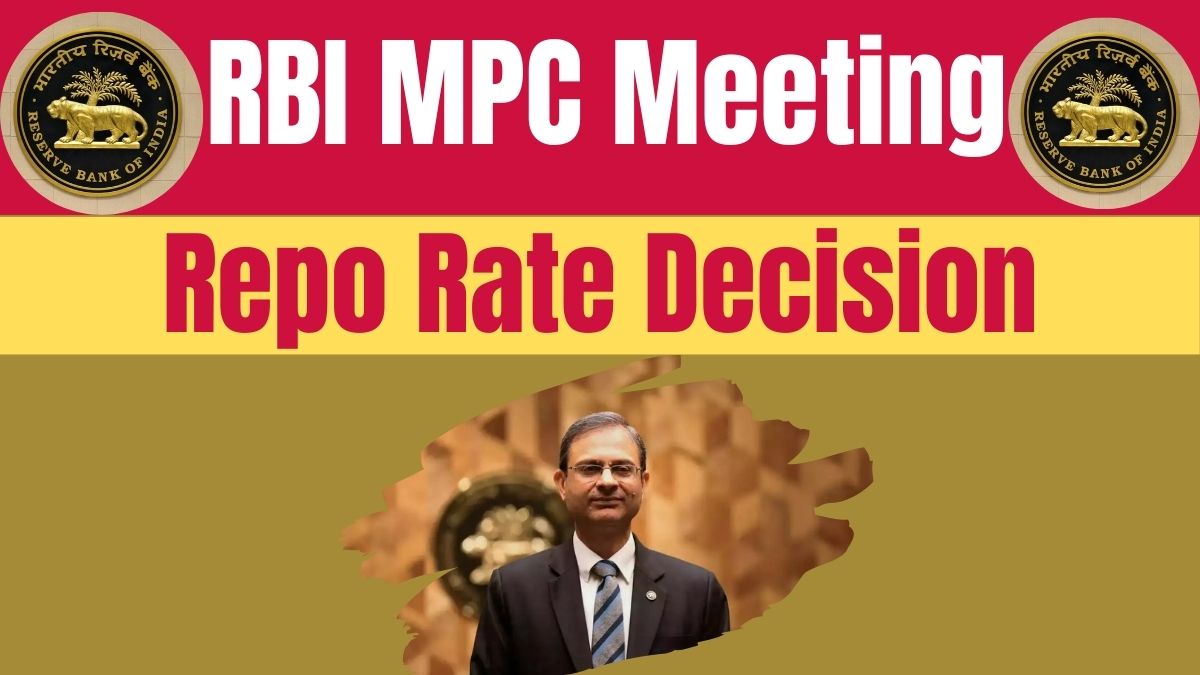The Monetary Policy Committee (MPC) of the Reserve Bank of India (RBI) is responsible for setting the nation’s key interest rates, including the repo rate, which determines borrowing costs across the economy.
The first RBI MPC meeting of 2025 is set to conclude on February 7, 2025, under the leadership of the new RBI Governor Sanjay Malhotra, who took office in December 2024 after Shaktikanta Das’s tenure ended.
Economists anticipate that the MPC may announce a 25 basis points (bps) repo rate cut, which would be the first such reduction in nearly five years. The last cut happened in May 2020, during the COVID-19 pandemic when the repo rate was lowered to 4% to support economic recovery.

Why is a Repo Rate Cut Expected?
Several factors have contributed to speculation that the RBI will cut interest rates:
1. Economic Growth Concerns
- India’s GDP growth slowed to 6.4% in 2024-25, prompting calls for an easier monetary policy to boost demand and investments.
2. Global Interest Rate Trends
- Many global central banks have already started cutting interest rates, providing India an opportunity to follow suit.
3. Government Support Measures
- The Union Budget 2025 has introduced measures to boost consumption, increasing expectations that the RBI will cut rates to support economic expansion.
4. Liquidity Injection by RBI
- The RBI recently injected ₹1.5 lakh crore into the banking system to ensure that any rate cut is effectively transmitted to borrowers.
Challenges for RBI in Cutting the Repo Rate
Despite the expectations of a rate cut, the RBI faces several challenges:
1. Inflation Risk
- Inflation has remained above 5% for the last five months, exceeding the RBI’s target of 4%. Lowering interest rates could increase inflation further, making essential goods more expensive.
2. Global Economic Uncertainty
- The US Federal Reserve’s interest rate policies and global trade tensions could destabilize foreign investments, leading to a weaker rupee.
3. Indian Rupee Depreciation
- The Indian rupee has already crossed ₹87 per USD, making imports costlier. A further rate cut could weaken the rupee more, increasing inflation.
How Will the RBI Repo Rate Decision Impact Education Loans?
The repo rate directly influences loan interest rates, including education loans. Here’s how the RBI decision could affect students:
1. Lower Interest Rates on Education Loans
- If the repo rate is reduced, banks and financial institutions may lower education loan interest rates.
- Students will pay lower EMIs, making higher education more affordable.
2. Easier Loan Repayment
- Graduates who already have education loans will see a reduction in EMI burdens, allowing them to manage their finances better.
3. Impact on Study Abroad Aspirations
- A weaker rupee means that tuition fees and living expenses abroad will increase.
- However, lower education loan interest rates could offset some of the additional costs.
4. Economic Growth & Job Market Impact
- If the RBI cuts the repo rate, it could boost economic growth, leading to more job opportunities for fresh graduates.
Expected Outcomes of the RBI MPC Meeting
| Scenario | Impact on Education Loans | Impact on Economy |
|---|---|---|
| 25 bps Rate Cut | Lower interest rates, cheaper education loans | Boosts growth, weaker rupee |
| No Rate Cut | Education loan rates remain unchanged | Stable inflation, rupee remains strong |
| Delayed Rate Cut | Borrowers have to wait for relief | RBI prioritizes inflation control |
What’s Next?
- Final Decision Announcement: The RBI will announce its decision on February 7, 2025, at 10:00 AM.
- Press Conference: Governor Sanjay Malhotra will address the media at 12:00 PM, providing insights into the policy decision.
FAQs
What is the role of the RBI MPC?
The RBI Monetary Policy Committee (MPC) sets India’s interest rates to control inflation, borrowing costs, and economic growth.
When is the RBI MPC meeting decision expected?
The repo rate decision will be announced on February 7, 2025, at 10:00 AM.
How does the repo rate affect education loans?
A lower repo rate leads to lower education loan interest rates, reducing EMI burdens for students.
Will studying abroad become costlier?
Yes, if the rupee weakens, studying abroad could become more expensive. However, lower loan interest rates might balance the cost.
What happens if the RBI does not cut the repo rate?
If the RBI keeps the rate unchanged, education loans will not become cheaper, and inflation control remains a priority.
Will the RBI cut the repo rate in 2025?
There is speculation of a 25 bps rate cut, but inflation risks could delay the decision.
Conclusion
The RBI MPC meeting 2025 will significantly impact loan rates, education costs, and job opportunities. Students and borrowers should stay updated on the final decision on February 7, 2025, and plan accordingly.
Click here to know more.
Sachin is a seasoned educator and writer with extensive experience in the field of education. With a deep passion for fostering learning and intellectual curiosity, he has spent many years working across various educational settings, from schools to higher education institutions. His writings often focus on the evolving landscape of education, highlighting innovative teaching methods, the integration of technology in learning, and the importance of personalized education. Sachin’s expertise and commitment to the betterment of education have made him a respected voice in the field, inspiring both students and educators alike.